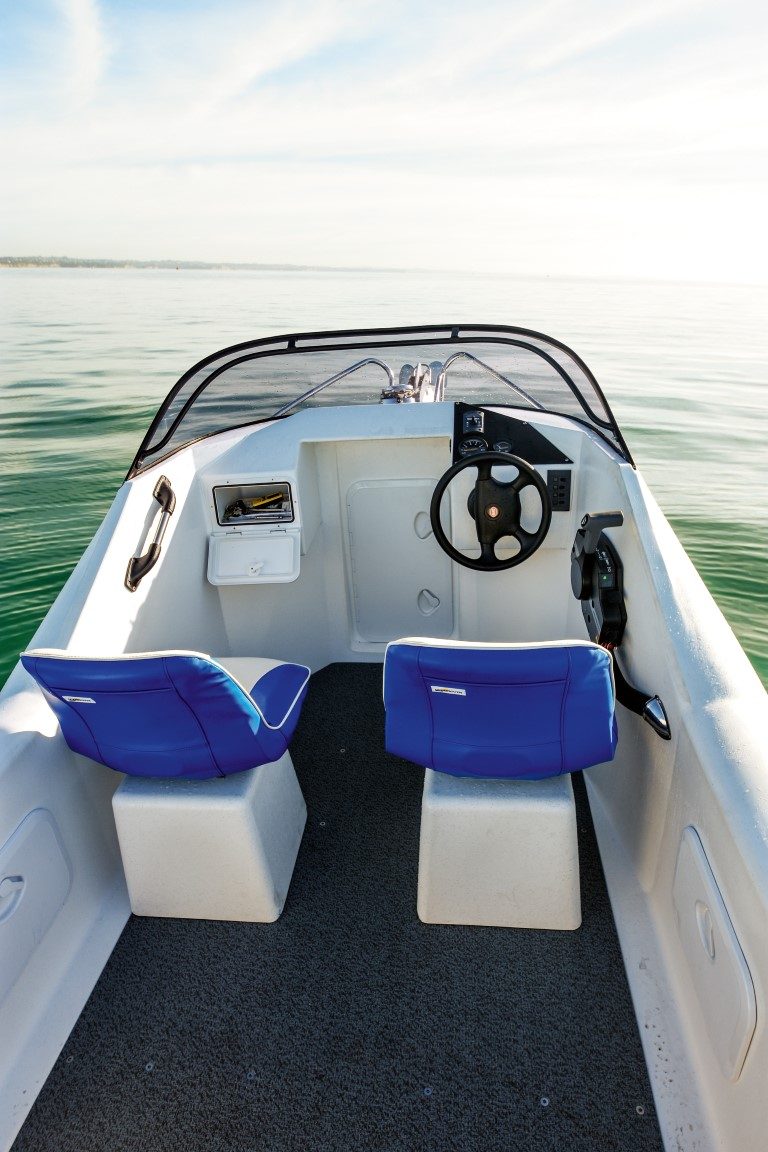‘Behemoth’ is a word which springs to mind or, perhaps more nautically, ‘leviathan’.
- Handles nicely
- 22-degree deadrise
- Double-skinned, foam filled
- Super-tough and easy to repair
- Quiet runner
- Roto-moulded PE
- Polyethylene offers advantages for boatbuilders.
- Stowage limited but better than earlier models
- Forward helm position is cosy


 The anchor locker is accessible through the cuddy cabin hatch. Mac has fitted a helm-operated Maxwell rope-chain capstan to raise and lower a CQR anchor that’s housed on the fairlead between split bowrails. A narrow belting strip with a colour-matched infill wraps around the pontoon, protecting it from
The anchor locker is accessible through the cuddy cabin hatch. Mac has fitted a helm-operated Maxwell rope-chain capstan to raise and lower a CQR anchor that’s housed on the fairlead between split bowrails. A narrow belting strip with a colour-matched infill wraps around the pontoon, protecting it from









